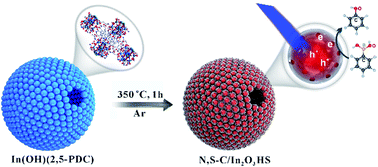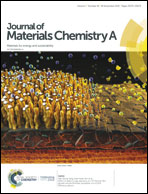Significantly enhanced photocatalytic performance of In2O3 hollow spheres via the coating effect of an N,S-codoped carbon layer†
Abstract
A typical catalytic process generally consists of diffusion, adsorption and surface reaction, which should be fully taken into account for the catalyst design. In this article, we synthesized hollow spheres (N,S-C/In2O3 HSs) assembled from N,S-codoped carbon layer coated In2O3 nanoparticles, in which the porous architecture could provide diffusion channels for reactant molecules, the N,S-codoped carbon layer could enhance the separation efficiency of photogenerated carriers, and the hollow structure could improve the amount of active sites and enhance the light utilization efficiency. The obtained N,S-C/In2O3 HS exhibits extraordinary photocatalytic oxidative hydroxylation of arylboronic acids under blue-light irradiation. From the theoretical calculations, it was found that the carbon layer not only strengthens the adsorption of arylboronic acid reactants, but also activates the boron atom in arylboronic acids. The present work indicates that the carbon layer could be used as a medium between inorganic semiconductor photocatalysts and organic reactant molecules, thus promoting the application scope of inorganic semiconductor photocatalysts in the field of selective organic synthesis.



 Please wait while we load your content...
Please wait while we load your content...